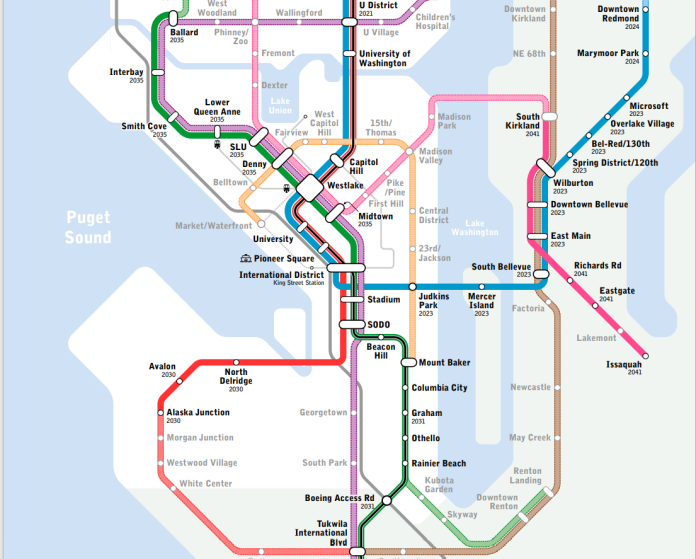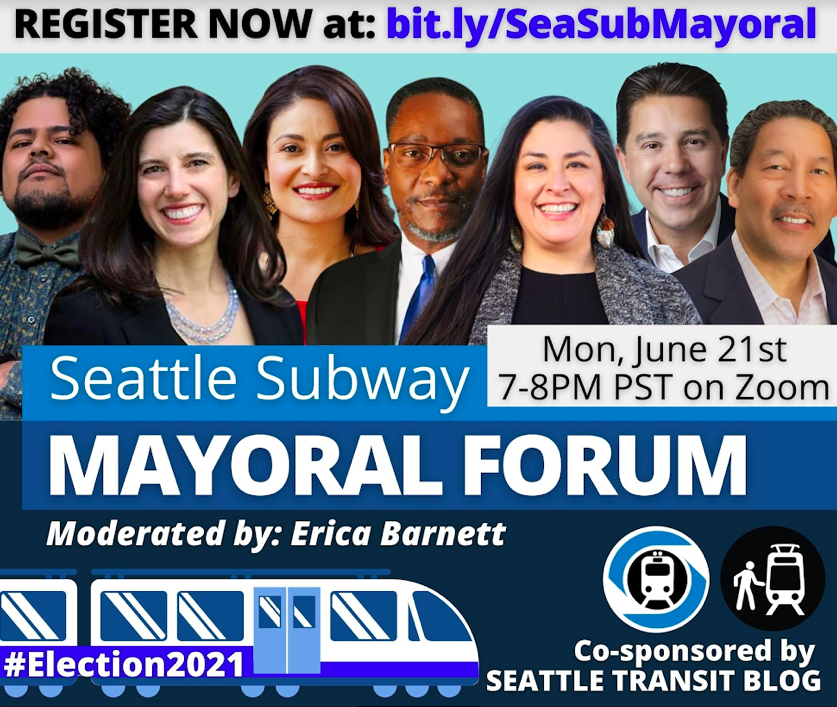Seattle Subway and co-sponsor Seattle Transit Blog, both members of the MASS Coalition alongside The Urbanist, held a mayoral forum focused on the topic of mass transit in the Seattle area. It was the rare 2021 political discussion in which the word Covid never made an appearance, although references to economic challenges and other repercussions resulting from the pandemic haunted the background of several candidate responses.
Moderator Erica C. Barnett of Publicola kept the discussion moving forward through a succession of open ended questions to which the candidates had one minute to respond and two rounds of rapid fire yes/no questions, to which candidates mostly adhered to the yay or nay format with a few exceptions, like when longtime transit booster former State Representative and Executive Director of Transit Choices Coalition Jessyn Farrell refused to choose between funding bus service hours or fare reductions. Perhaps being a mom of three, she’s learned the hard way not to choose between one’s babies.
Maybe the biggest surprise of the evening was the fact that there was so much unanimity on questions that have been relatively thorny in public debate. On all of the yes/no questions, responses of “no” were in short supply, with candidates vying to demonstrate their pro-transit cred, often referencing professional and volunteer work going back, in some cases, decades.
Support for preserving Sound Transit 3 (ST3) plans in the face of potential budget shortfalls was strong among all participants, although discussion of potential funding mechanisms was in short supply, with the exception of a call for a moratorium on funding for new highways advocated by former Chief Seattle Club Executive Director Colleen Echohawk and a call for soliciting private donations from local companies from Rainier Valley nonprofit leader and entrepreneur Lance Randall. But with finances largely removed from the discussion, support for ST3 was high, even from Casey Sixkiller, a current deputy mayor in Durkan’s administration and arguably the most traditionally conservative of the candidates, touting his decades of support for high-capacity transit and his experience advocating for funding Seattle transit in the “other” Washington.
Since transit-friendly vibes dominated the hour long discussion, some of the unclear positions that emerged seemed to show more about candidates’ gaps in personal knowledge of the topic matter rather than where they might stand as the city’s chief executive. For instance, Echohawk’s seemingly off-topic remark about the need to increase bus service to Link light rail stations after being asked to name the greatest obstacle to connecting Seattle’s urban villages with a robust rapid transit network felt more forgivable after she owned up to not being a transportation policy wonk later on in the forum. Randall was strong on referencing topics related to the need to support communities historically underserved by transit in South Seattle, but rarely mentioned particulars other than the need to prioritize basic needs like user safety and maintenance of roads and bridges.
Candidates with previous legislative experience were able to offer up more substantive answers to many questions, although former City Councilmember Bruce Harrell’s response that the city’s topology and geology present the greatest obstacles to building a city rail system fell a bit flat. After all, Seattle has been known for its mammoth engineering projects, like the Denny Regrade shown below, for over a hundred years.
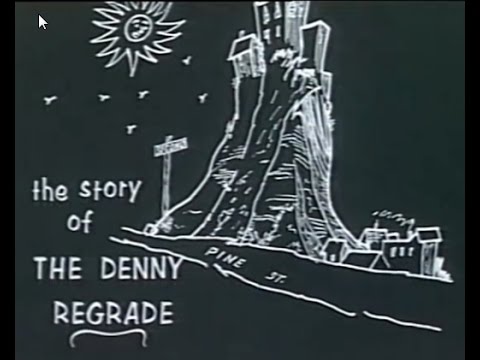
The importance of statewide leadership in transit and fostering regional transportation collaboration came up several times, with concerns voiced that emphasizing a Seattle-centric versus regional light rail plans might fail to gain funding traction on the state level. At the same time, all of the candidates did say to “yes” to a question asking if they would advocate on the state level for Seattle to have more power to fund light rail on its own. To this point, City Council President M. Lorena González explicitly referenced her support for proposed statewide House Bill 1304, which proposes amending the existing City Transportation Authority (CTA) so it would have the right fund grade-separated rail transit. Currently, the CTA only has the right to fund a nonexistent monorail system dreamt up by Seattle planners of yesteryear. (Think failed monorail evangelist Steve Dunne of the 1990’s era cult film, Singles.)
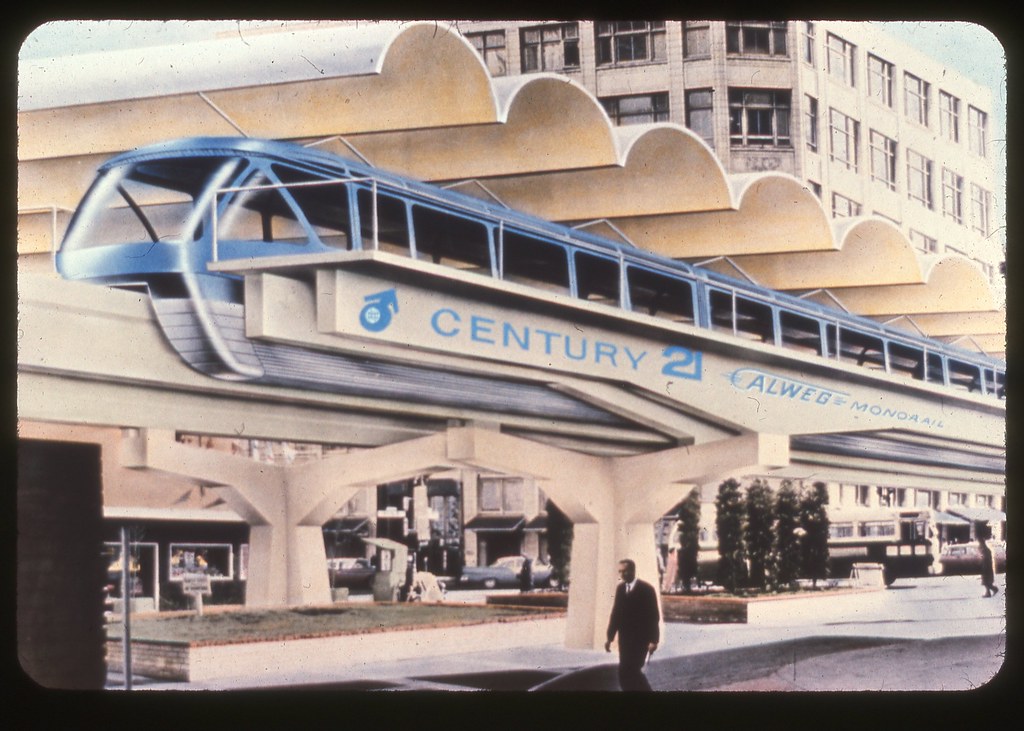
González pledged to continue support for Seattle to raise funding and engage in independent rail system planning as mayor, support which will be crucial for Seattle transit advocates since the HB 1304 never made it out of committee this legislative session. Other candidates, including architect Andrew Grant Houston, also voiced support for HB 1304. In a very 2021 moment, Houston demonstrated the power of having a highly-informed Twitter entourage when he used social media to correct an inaccurate reference to the bill earlier in the forum. He also offered up one of the forum’s most nuanced responses on transportation equity during the evening, citing the need to consider it both in terms of the people and modes served, explaining that the prioritization of vehicles over other modes of transportation has resulted in a system that is inequitable to people who walk, bike, and roll.
Sticking with the topic of Seattle-only rail, when asked whether or not as mayor they would “update the City’s Transportation Master Plan to codify a citywide exclusive right-of-way light rail plan by the end of 2022,” none of the candidates blinked an eye before saying “yes,” although that response might have revealed more about their desire to please their current audience than what actions they would undertake as mayor given the magnitude of the ask.
All candidates also pledged to ensure infrastructure in the current ST3 plans are built with future system expansion in mind, with Sixkiller alone adding the caveat that he would do so “only if it fit into the budget.” Sixkiller also stood out from the pack by voicing his support for maintaining minimum parking requirements and single-family residence zoning, the latter position also held by Randall.
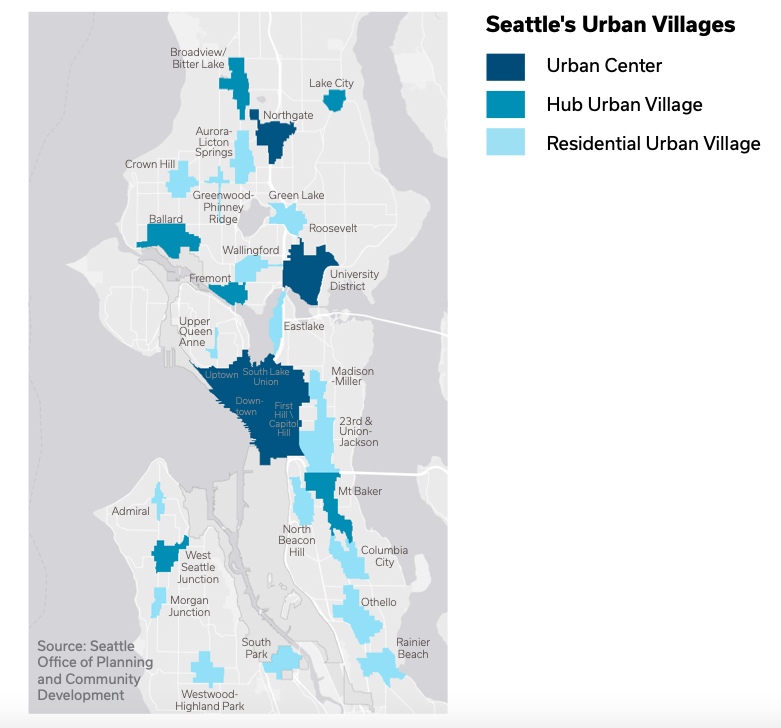
While Houston frequently criticized decisions made by current and former city leadership, Sixkiller was often defensive of his boss and decisions made by her administration. None of the other candidates expressly critiqued the viewpoints or specific work undertaken by current mayor, city council, or opposing candidates in the race.
On the other hand, several candidates were critical of progress made, or rather not made, on projects funded by the City’s Move Seattle Levy, which will come up for voter reauthorization in 2024. Farrell criticized both the City’s failure to advance in planning and implementation of levy projects, while Echohawk put forth a similar critique, going on to highlight her management experience as an affordable housing developer. Echohawk also emphasized the need for a race and equity lens to be applied to future transportation planning to which González praised the City’s current transportation equity work group, which she promised would finally have “the teeth to implement many of the good recommendations” they have already identified if she were to become mayor.
As a whole, if the level of love for transit radiating from Zoom during the hour long candidate forum could be trapped and actualized, Seattle Subway’s dreamy map of a transit rich future would be well on its way to becoming reality.
Natalie Bicknell Argerious (she/her) is a reporter and podcast host at The Urbanist. She previously served as managing editor. A passionate urban explorer since childhood, she loves learning how to make cities more inclusive, vibrant, and environmentally resilient. You can often find her wandering around Seattle's Central District and Capitol Hill with her dogs and cat. Email her at natalie [at] theurbanist [dot] org.


